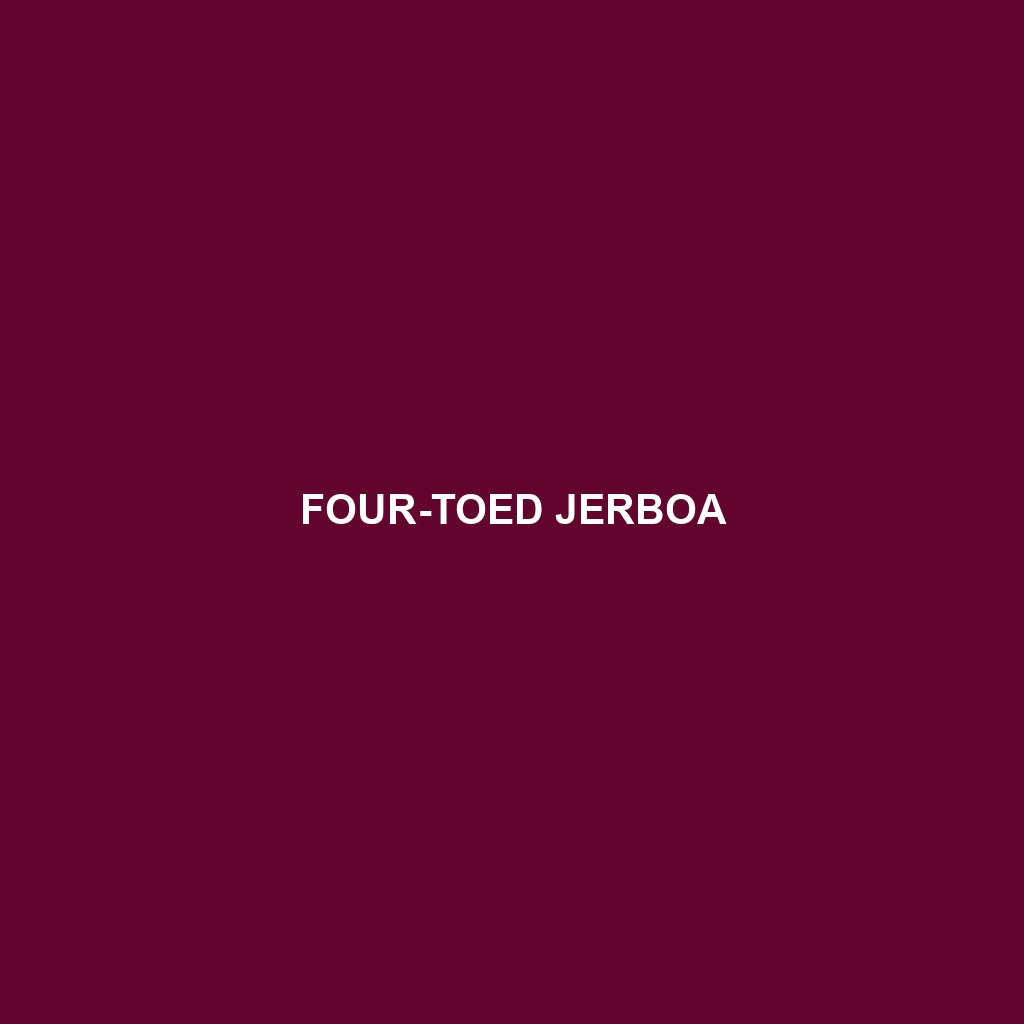Vinogradov’s Jerboa Species Description
Common Name: Vinogradov’s Jerboa
Scientific Name: Allactaga vinogradovi
Habitat
Vinogradov’s Jerboa is primarily found in the arid regions of Central Asia, particularly in parts of Kazakhstan, Uzbekistan, and northern Tajikistan. This species thrives in sandy deserts and semi-desert environments, where it creates burrows in loose soil. These habitats offer not only shelter but also provide the necessary conditions for foraging.
Physical Characteristics
This small rodent measures approximately 10 to 15 cm in body length, with a tail that can be nearly double its body length, helping maintain balance during its impressive jumps. The fur of Vinogradov’s Jerboa is typically a sandy or pale brown, providing excellent camouflage in its desert environment. One of its most distinctive features is its long hind legs, which are adapted for jumping, allowing it to evade predators.
Behavior
Vinogradov’s Jerboa exhibits nocturnal behavior, being most active during the night. Its unique hopping movement is both a form of travel and a means of escaping threats. The species is known for its remarkable agility, often reaching speeds of up to 24 kilometers per hour. Additionally, it has established a complex burrowing system that serves as a refuge from the harsh desert climates.
Diet
This jerboa primarily feeds on seeds, grains, and various plant materials. Its diet is adapted to the arid environment, which limits water availability. To meet its hydration needs, Vinogradov’s Jerboa often ingests succulent plants, drawing moisture directly from its food sources. Its feeding habits are crucial for promoting seed dispersal and plant growth in the ecosystem.
Reproduction
Vinogradov’s Jerboa breeds seasonally, with mating typically occurring in the spring. After a gestation period of approximately 25 to 30 days, the female gives birth to a litter of 2 to 4 young. These offspring are weaned after a few weeks and begin to emerge from the burrow shortly thereafter, quickly adapting to the harsh conditions of their environment.
Conservation Status
According to the IUCN Red List, Vinogradov’s Jerboa is classified as vulnerable due to habitat loss and degradation caused by agricultural expansion and urbanization. Conservation efforts are necessary to protect its remaining habitat and ensure the survival of this unique species.
Interesting Facts
Despite their small size, Vinogradov’s Jerboa can leap more than 3 meters in a single bound. This extraordinary ability not only helps in evading predators but also adds to its charm amongst desert fauna enthusiasts. Additionally, the jerboa’s fur can change color slightly with the seasons, further enhancing its camouflage.
Role in Ecosystem
Vinogradov’s Jerboa plays a vital role in its ecosystem by contributing to soil aeration through its burrowing habits. Additionally, it serves as prey for a variety of predators, including birds of prey and small carnivores. The species also aids in seed dispersal, promoting biodiversity within its desert habitat.
